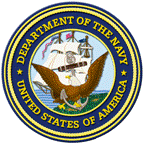United States Department of Defense

United States Navy: Publications
Date of this Version
2017
Citation
J. Anim. Sci. 2017.95:1396–1406
Abstract
Ammonium urate nephrolithiasis frequently develops in common bottlenose dolphins (Tursiops truncatus) managed under human care but is rare in free-ranging common bottlenose dolphins. In other species, the dietary cation–anion difference (DCAD) can affect ammonium urate urolith forma- tion by increasing proton excretion as ammonium ions. Therefore, differences in diet between the 2 dolphin populations could affect urolith formation, but the DCAD of most species consumed by free-ranging and managed dolphins is unknown. To compare the nutrient composition of diets consumed by free-ranging and managed bottlenose dolphins, samples (n = 5) of the 8 species of fish commonly consumed by free-ranging bottlenose dolphins in Sarasota Bay, FL, and the 7 species of fish and squid commonly fed to man- aged bottlenose dolphins were analyzed for nutrient content. Metabolizable energy was calculated using Atwater factors; the DCAD was calculated using 4 equations commonly used in people and animals that use different absorption coefficients. The nutrient composition of individual species was used to predict the DCAD of 2 model diets typically fed to managed common bottlenose dolphins and a model diet typically consumed by common bottlenose dolphins in Sarasota Bay. To mimic differences in postmortem handling of fish for the 2 populations of bottlenose dolphins, “free-ranging” samples were immediately frozen at −80°C and minimally thawed before anal- ysis, whereas “managed” samples were frozen for 6 to 9 mo at −18°C and completely thawed. “Free- ranging” species contained more Ca and P and less Na and Cl than “managed” fish and squid species. As a consequence, the DCAD of both model managed dolphin diets obtained using 3 of the 4 equations was much more negative than the DCAD of the model free-ranging bottlenose dolphin diet (P < 0.05). The results imply that managed bottlenose dolphins must excrete more protons in urine than free-ranging bottlenose dolphins, which will promote nephrolith formation. The nutrient composition of the free-ranging bottlenose dolphin diet, determined for the first time here, can be used as a guide for feeding managed bottlenose dolphins, but research in vivo is warranted to determine whether adding more cations to the diet will prevent urolith formation in managed dolphins.


Comments
© 2017 American Society of Animal Science.
This document is a U.S. government work and is not subject to copyright in the United States.
doi:10.2527/jas2016.1113